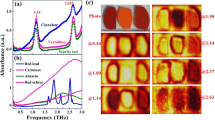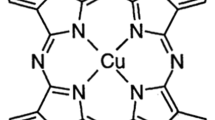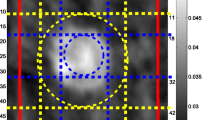Abstract
We have established optimal methods for terahertz time-domain spectroscopic analysis of highly absorbing pigments in powder form based on our investigation of representative traditional Chinese pigments, such as azurite [blue-based color pigment], Chinese vermilion [red-based color pigment], and arsenic yellow [yellow-based color pigment]. To accurately extract the optical constants in the terahertz region of 0.1 - 3 THz, we carried out transmission measurements in such a way that intense absorption peaks did not completely suppress the transmission level. This required preparation of pellet samples with optimized thicknesses and material densities. In some cases, mixing the pigments with polyethylene powder was required to minimize absorption due to certain peak features. The resulting distortion-free terahertz spectra of the investigated set of pigment species exhibited well-defined unique spectral fingerprints. Our study will be useful to future efforts to establish non-destructive analysis methods of traditional pigments, to construct their spectral databases, and to apply these tools to restoration of cultural heritage materials.
Similar content being viewed by others
References
F. Casadio, M. Leona, J. R. Lombardi and R. V. Duyne, Acc. Chem. Res. 43, 782 (2010).
S. E. Filippakis, B. Perdikatsis and K. Assimenos, Studies in Conservation 24, 54 (1979).
C. Casieria, S. Bubicia, I. Violab and F. De Lucab, Solid State Nucl. Magn. Res. 26, 65 (2004).
M. Dowsett and A. Adriaens, Nucl. Instr. Meth. Phys. Res. B 226, 38 (2004).
J. B. Jackson, J. Bowen, G. Walker, J. Labaune, G. Mourou, M. Menu and K. Fukunaga, IEEE Trans. Terahertz Sci. Technol. 1, 220 (2011).
K. Fukunaga, Y. Ogawa, S. Hayashi and I. Hosako, IEICE Electron. Exp. 4, 258 (2007).
K. Fukunaga, J. Nat. Inst. Inf. Commun. Technol. 55, 61 (2008).
M. V. Exter, Ch. Fattinger and D. Grischkowsky, Optics Lett. 14, 1128 (1989).
D. E. Aspnes, Thin Solid Films 89, 249 (1982).
E. M. Vartiainen, Y. Ino, R. Shimano, M. Kuwata-Gonokami, Y. P. Svirko and K-E. Peiponen, J. Appl. Phys. 96, 4171 (2004).
Author information
Authors and Affiliations
Corresponding author
Rights and permissions
About this article
Cite this article
Ha, T., Lee, H., Sim, K.I. et al. Optimal methodologies for terahertz time-domain spectroscopic analysis of traditional pigments in powder form. Journal of the Korean Physical Society 70, 866–871 (2017). https://doi.org/10.3938/jkps.70.866
Received:
Accepted:
Published:
Issue Date:
DOI: https://doi.org/10.3938/jkps.70.866




